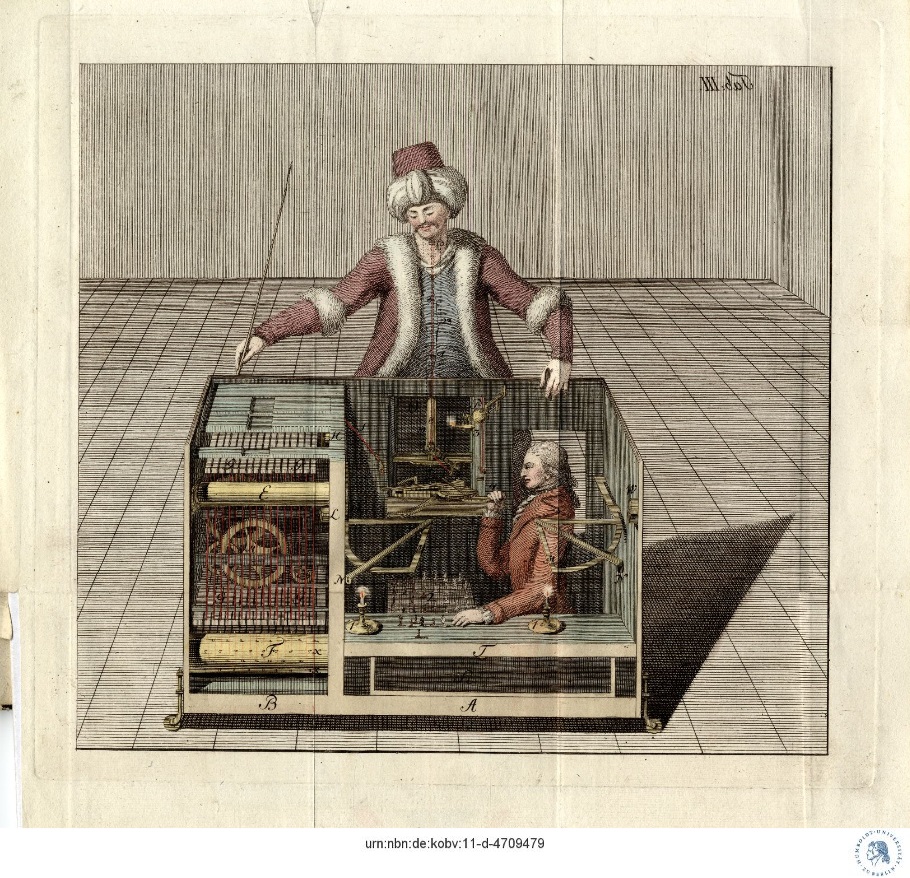Intelligence: can it be transferred from humans to machines? People are fascinated by this idea since centuries. We are going to approach the fascination of Artificial intelligence (AI) and try to get deeper into this subject.
Every week, from now on, you’ll find an article here on AI development and its applications like Autonomous driving. Our aim is to provide a not too superficial, but elucidating introduction to these topics that is understandable for all.
We do not start with Greek and Roman philosophers in ancient world, but will begin next week with the English biologist and cryptographer Alan Turing. In the 1950s, he tackled the question: "How to recognize an intelligent machine?" This may seem harmless, but the answer keeps AI professionals busy up to know.
 Image source: „Über den Schachspieler des Herren von Kempelen und dessen Nachbildung“, Humboldt University Berlin, public Wikimedia license.
Image source: „Über den Schachspieler des Herren von Kempelen und dessen Nachbildung“, Humboldt University Berlin, public Wikimedia license.
AI has been attracting people for a long time. This copperplate engraving, made by Joseph Racknitz in 1789, however, shows a fraud. The apparatus, alleged to play chess, was constructed by the notable Wolfgang von Kempelen in Austria-Hungary. But it wasn’t the machine that played, instead a person hidden inside the cabinet did.
You may create our AI story with us: just let us know which aspect of AI we should shed light on. We’ll take your suggestions and investigate on them. Meanwhile, you directly implement your AI ideas utilizing the world’s most powerful computers on omtec.de.
